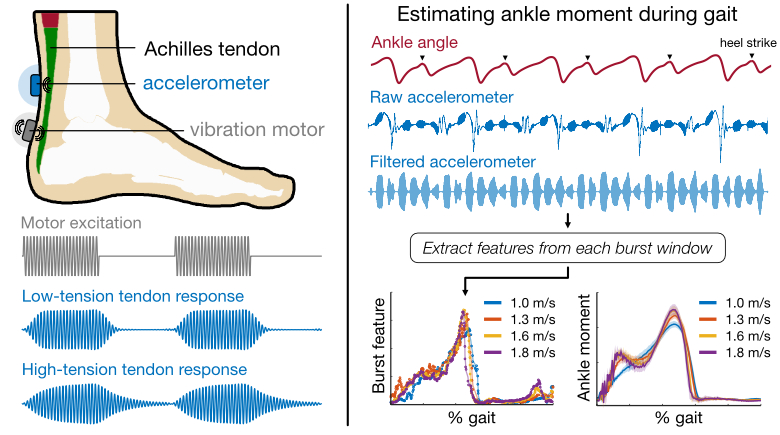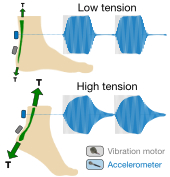
Tendons are essential components of the musculoskeletal system and, as with any mechanical structure, can fail under load. Tendon injuries are common and can be debilitating, and research suggests that a better understanding of their loading conditions could help mitigate injury risk and improve rehabilitation. To that end, we present a novel method of noninvasively assessing parameters related to mechanical load in the Achilles tendon using burst vibrations. These vibrations, produced by a small vibration motor on the skin superficial to the tendon, are sensed by a skin-mounted accelerometer, which measures the tendon’s response to burst excitation under varying tensile load. In this study, twelve healthy subjects performed a variety of everyday tasks designed to expose the Achilles tendon to a range of loading conditions. To approximate the vibration motor-tendon system and provide an explanation for observed changes in tendon response, a 2-degree-of-freedom mechanical systems model was developed. Reliable, characteristic changes in the burst response profile as a function of Achilles tendon tension were observed during all loading tasks. Using a machine learning-based approach, we developed a regression model capable of accurately estimating net ankle moment—which captures general trends in tendon tension—across a range of walking speeds and across subjects (R2 = 0.85). Simulated results of the mechanical model accurately recreated behaviors observed in vivo. Finally, preliminary, proof-of-concept results from a fully wearable system demonstrated trends similar to those observed in experiments conducted using benchtop equipment. These findings suggest that an untethered, unobtrusive system can effectively assess tendon loading during activities of daily life. Access to such a system would have broad implications for injury recovery and prevention, athletic training, and the study of human movement.

